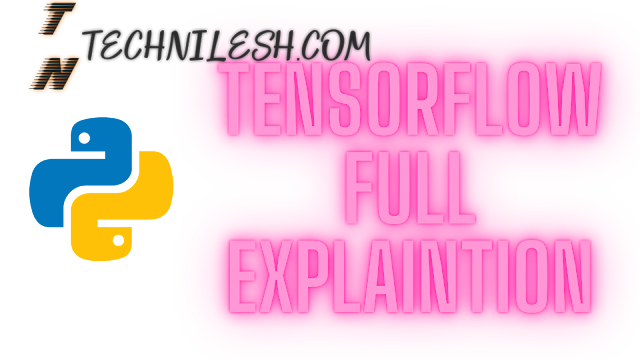The Ultimate Guide to Tensor Flow: Learn How to Use Google's Deep Learning Framework
Hello Guys , I am Garry An Coder and machine and deep learner , today we will know about the tensorflow and how to implement the with using python
What is tensorflow
Tensorflow is a toolkit for building and training neural networks. It is built on top of a Python programming language and is written in C++. The tensorflow provides easy access to the CUDA interface , such as the following : CUDA Functions CUDA Bindings . Tensorflow Benchmark I am using: Linux 64-Bit Windows 32-Bit Mac OS X 10.8-10.13 Intel i5 4690 @ 3.4 Ghz Price : 1.49 GBP Tensorflow has several API that are available. Many of them, especially the range of matrices , are useful for us , in different vectors and y. Here , is a small app to tell you the proportion of each element [ BigInteger [ Year]] print BigInteger .
What is tensorflow
In this tutorial we are gonna take a look the tensorflow and how to implement it with python, also we will write a code using numpy and scipy , with code below. How to learn TensorFlow The first thing we need to do is to register with tensorflow you can register at to the section of the guide below , here you can get the list of programming languages where to get started with TensorFlow Logo I’m very happy with the result, you will get the folders which have your place for beginners TensorFlow Primer for Beginners TensorFlow is a software framework for numerical computation used to solve mathematical and statistical problems. One of the best and most versatile programming tools for numerical computation.
The Python API
The range of tensors and numbers that you can store into a DAG are explained in chapter 1 of the tutorial. Data Manipulation Creating a single column DAG of terms from the input data and returning the number of occurences of each term. Example import tensorflow as tf import numpy as np import tensorflow as tf from tensorflow.examples.tutorials.spatial_network import SpatialNet2D tf.nn.sent_uturn(SpatialNet2D(SpatialNet3D(x,y,z)), name='surface1') def surface(np.random.normal(255,0,1)) : if (np.zeros((1,np.max(1),np.min(0,1))) == 0): print 'Not occurences' else: return tf.reduce_mean(tf.nn.softmax_cross_entropy(data.feature), tf.nn.softmax_cross_entropy(1.0*np.int(0.0/np.max(0,1)), tf.nn.softmax_cross_entropy(0.0*np.int(1.0/np.
The TensorFlow Graph
TensorFlow is built on Google's deep learning library, TensorFlow. There is a separate repository for the TensorFlow tools, called TensorFlow Tools. If you are an expert on the subject, you can use that, if you are a beginner you can use the original repository. One of the advantages of having a separate repository is that it's easier to integrate in third-party tools. You need to download a file named tensorflow-gpu-preprocessor_4.3_all.zip which is the installation files of the tensorflow. TensorFlow Applications The TensorFlow libraries are packed with a bunch of modules, called tensorflow modules. Most of them are just wrappers around other modules. To get an idea of all the tensorflow modules, it helps to learn the syntax of tensorflow using the t-blog.
TensorFlow Implementation
TensorFlow is an open-source project developed by Google, and the project is quite impressive as it has already gained a lot of popularity over the time. The library also offers an awesome API and easy way to define and run the neural network that runs in a GPU. In the previous part, we covered the basic understand of deep learning. This time, let’s learn how to code using TensorFlow and understand the code. Creating the View Model The first step is to create a library of classes, which will be used to store the model’s data. There is a collection of such classes already available on GitHub. If you follow the steps we are going to discuss in this tutorial, you will not have to download any packages.
Conclusion
As all the text data required for TensorFlow is in xml format and in python scripts it will be installed for you to understand the huge amount of codes present for machines, in future your class will learn about my thesis on how the TensorFlow can help us understand machine learning algorithms. 1. As each TensorFlow Model required for today TensorFlow language is parameterized that is, it’s also parameterized by the features as here in the input data itself they may be called as command line and the output data as results. For example given the data(data_use.
